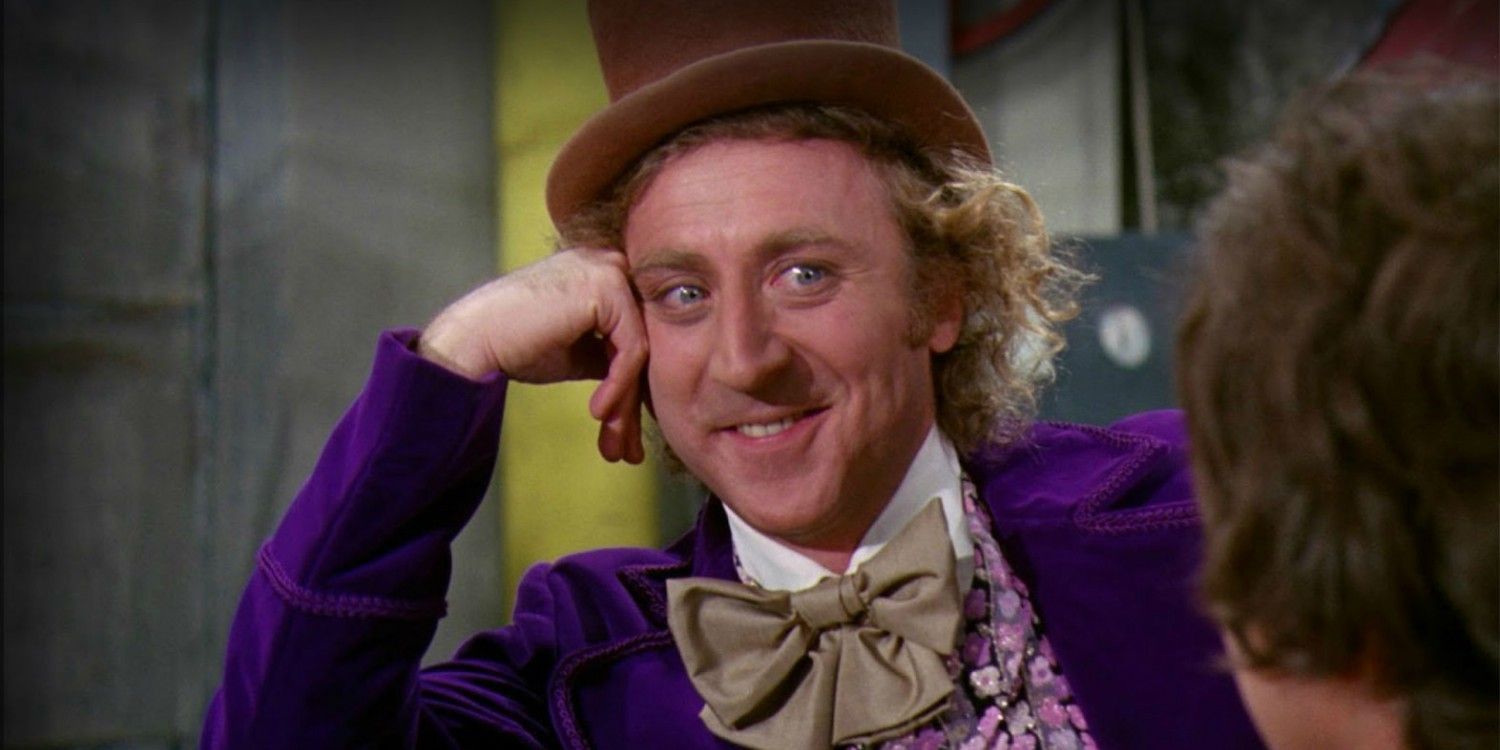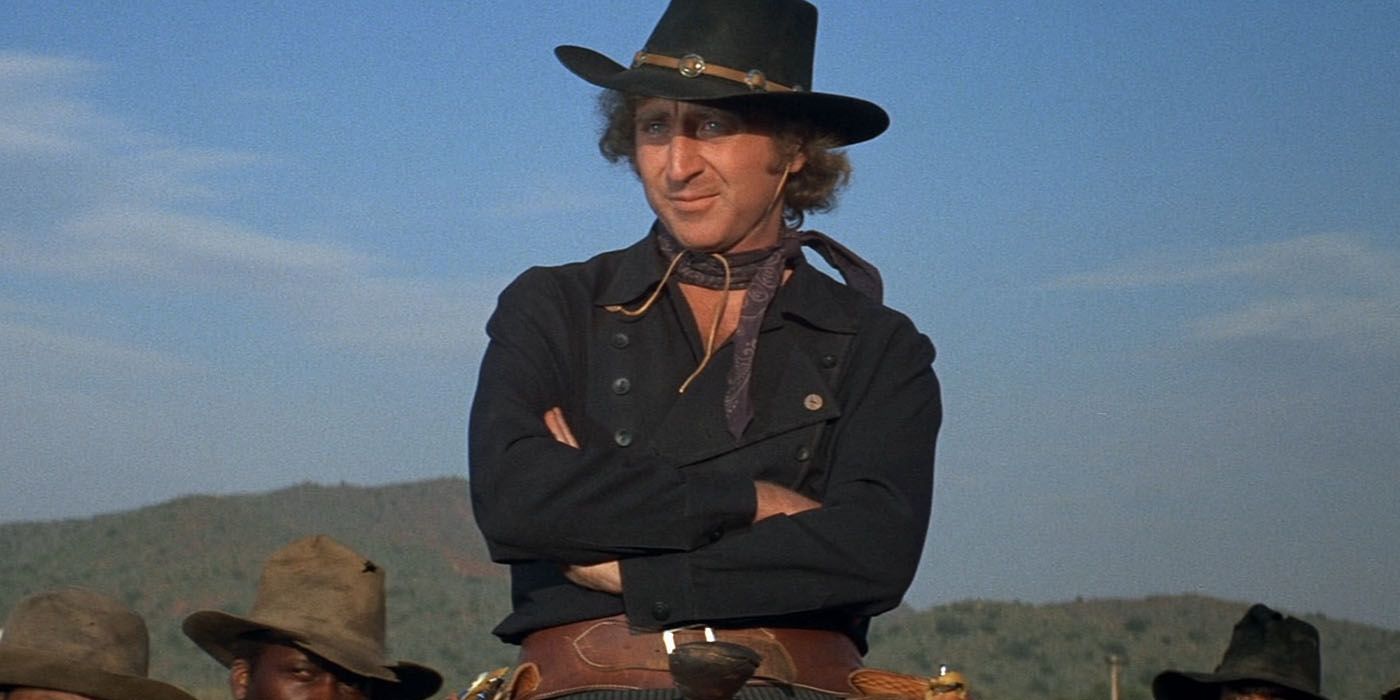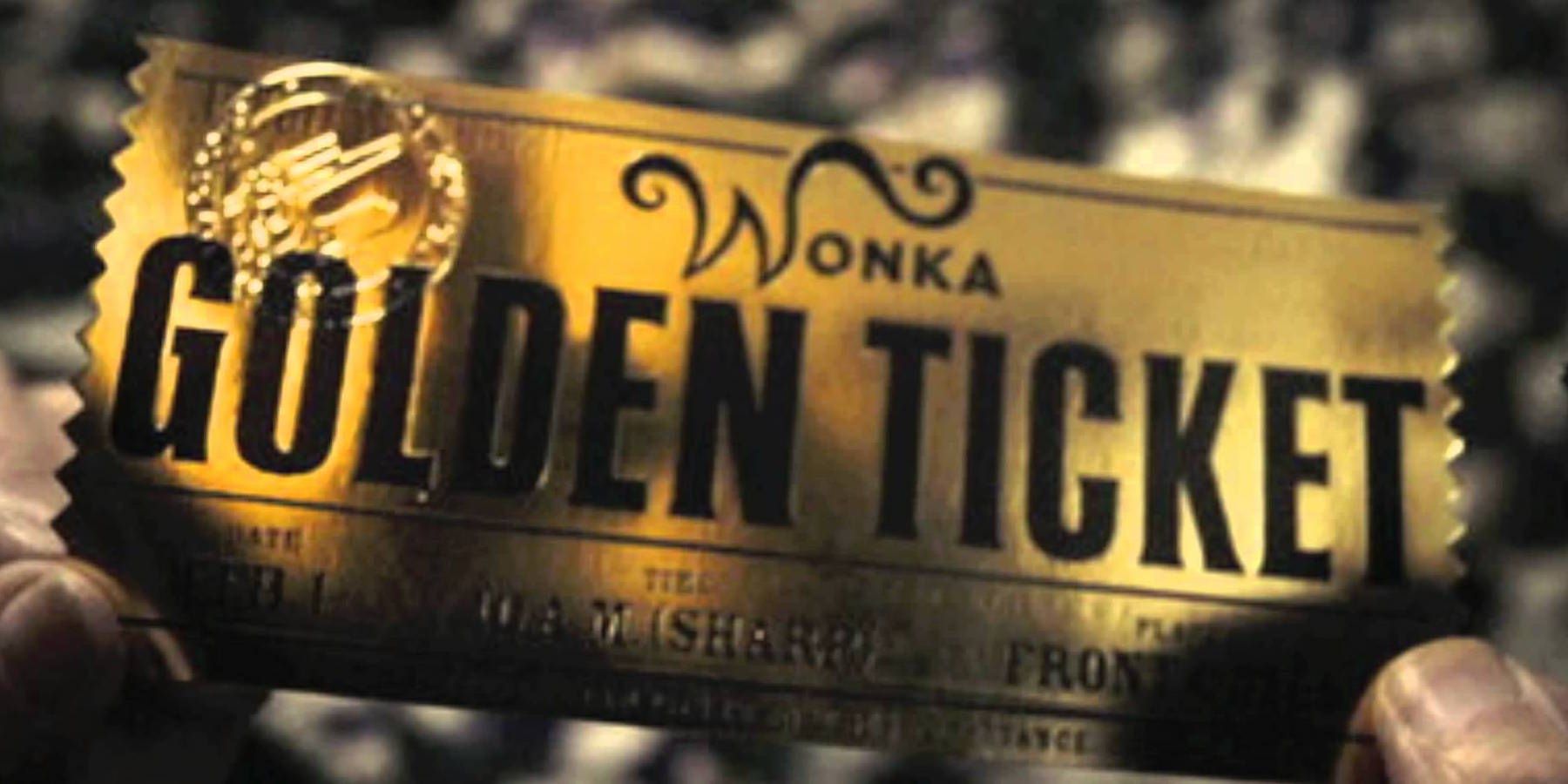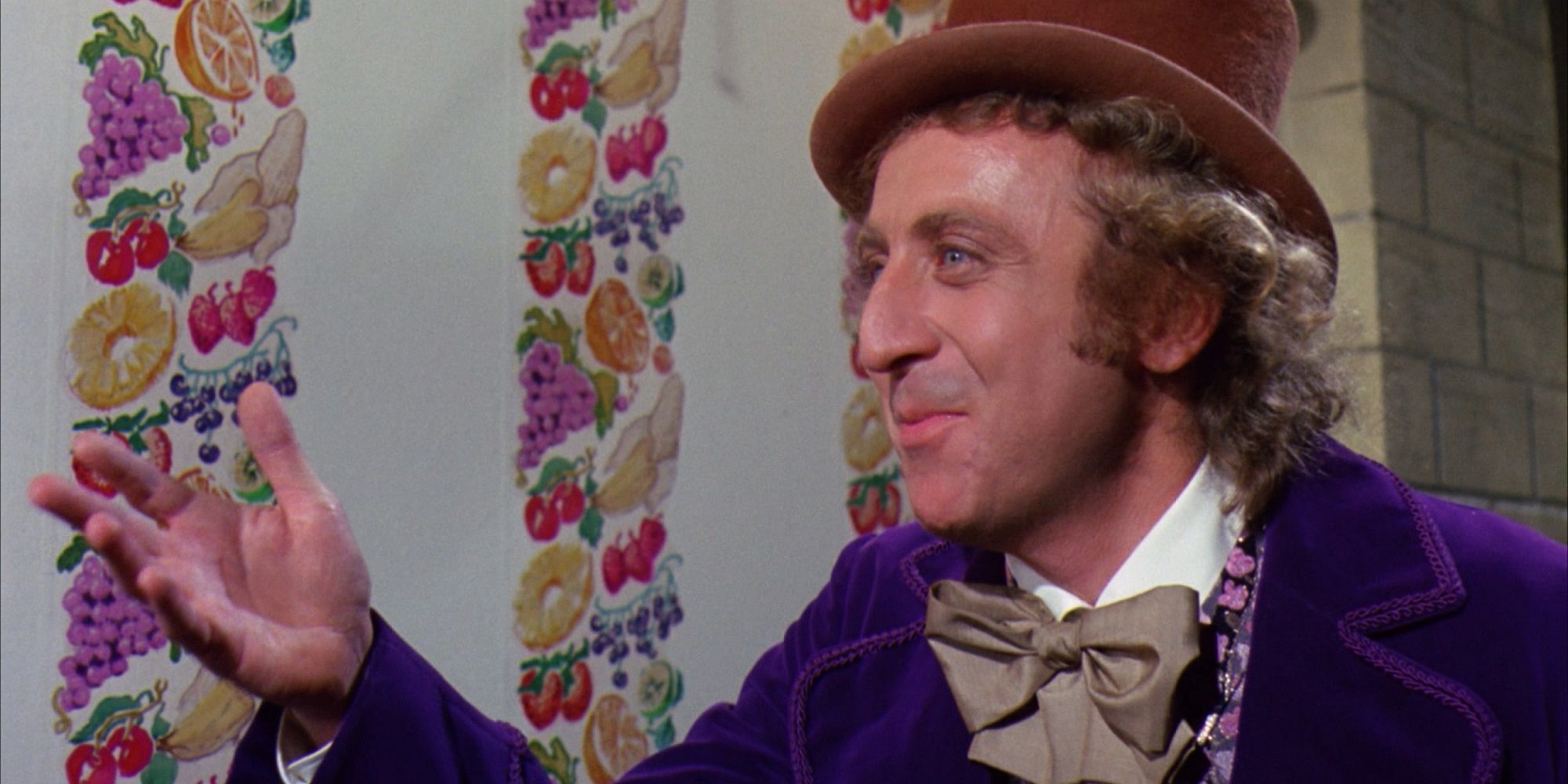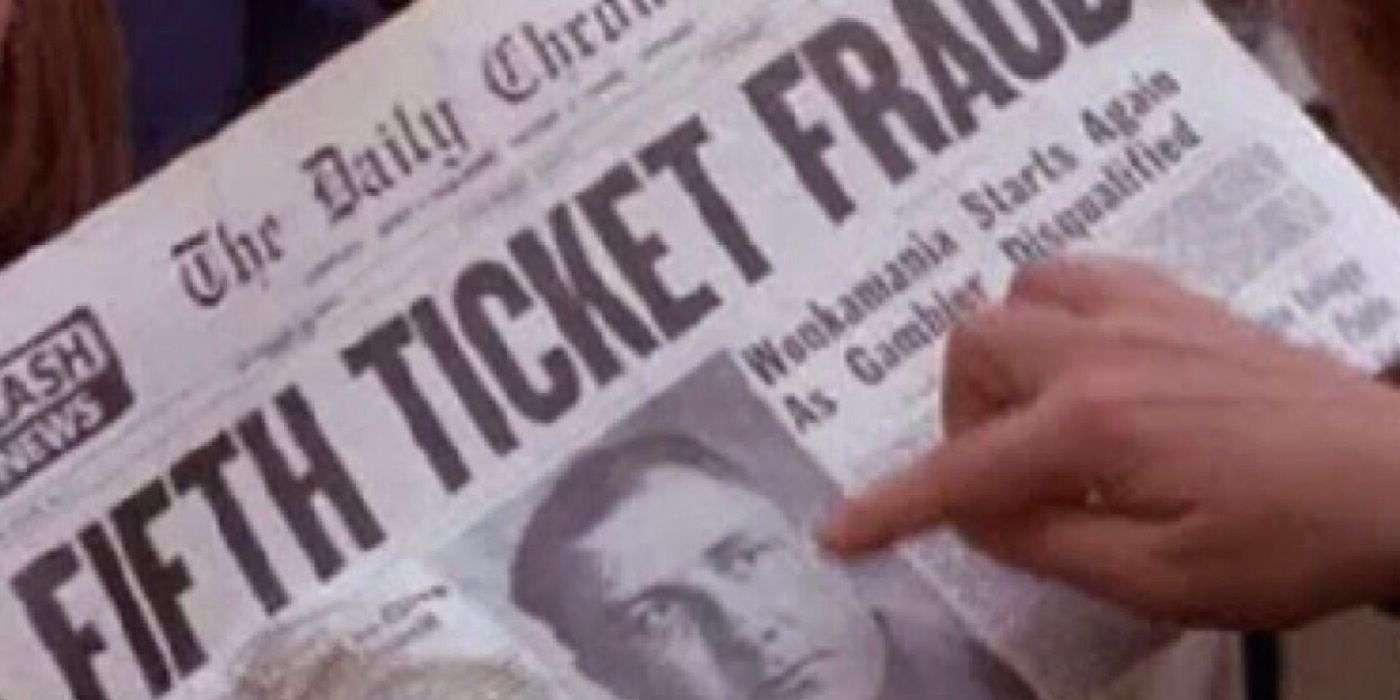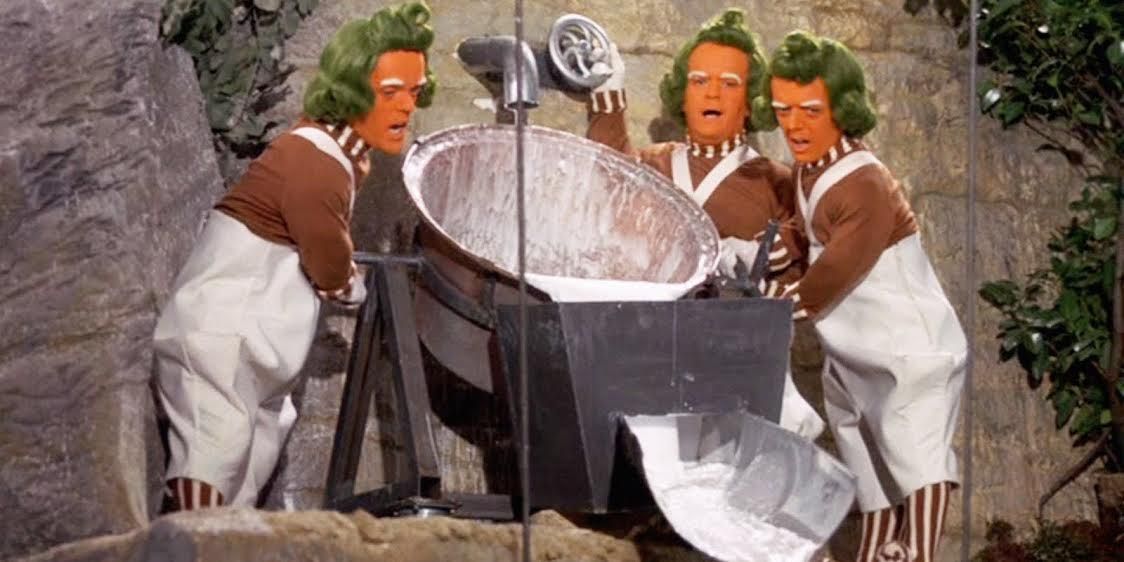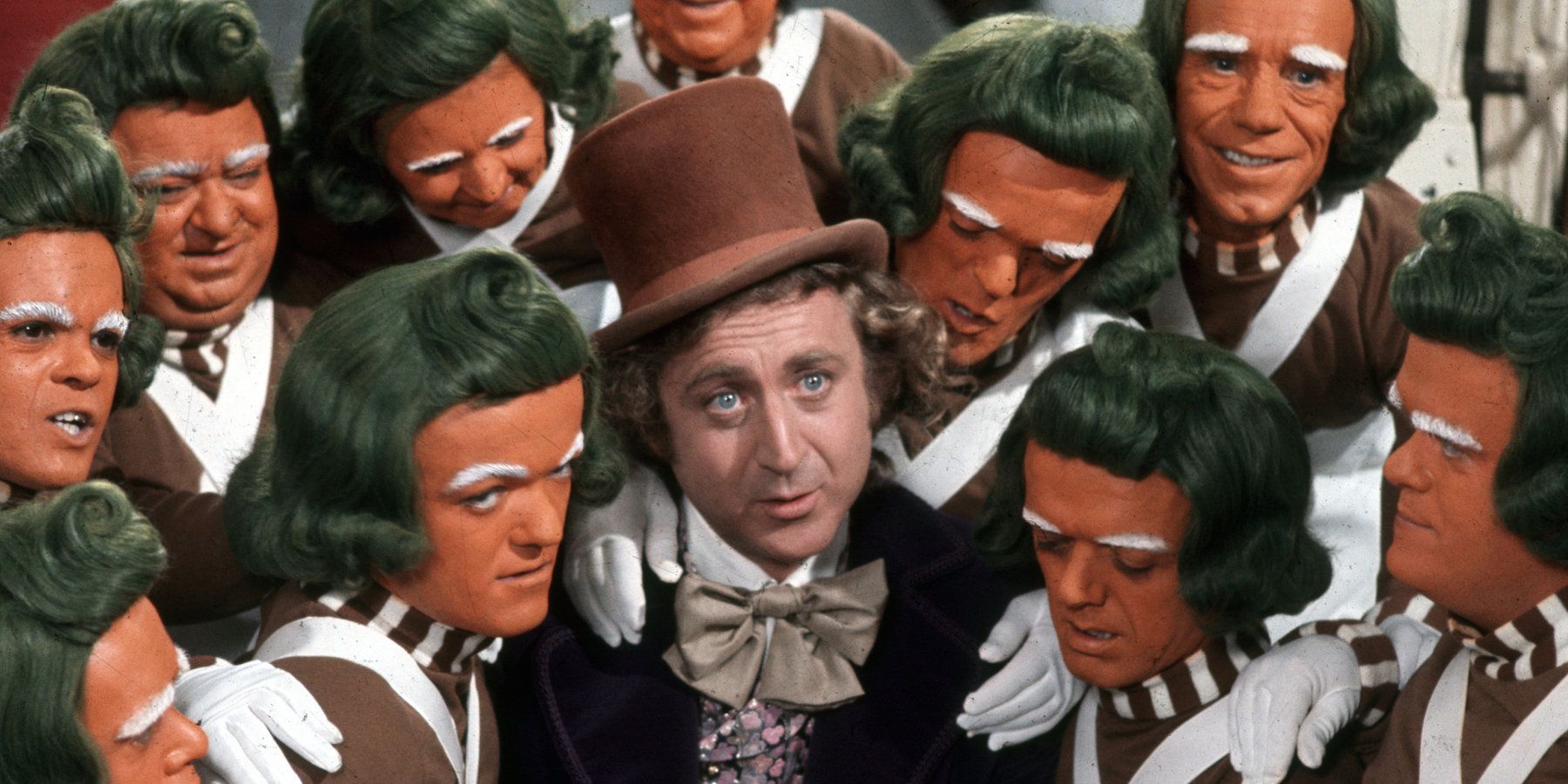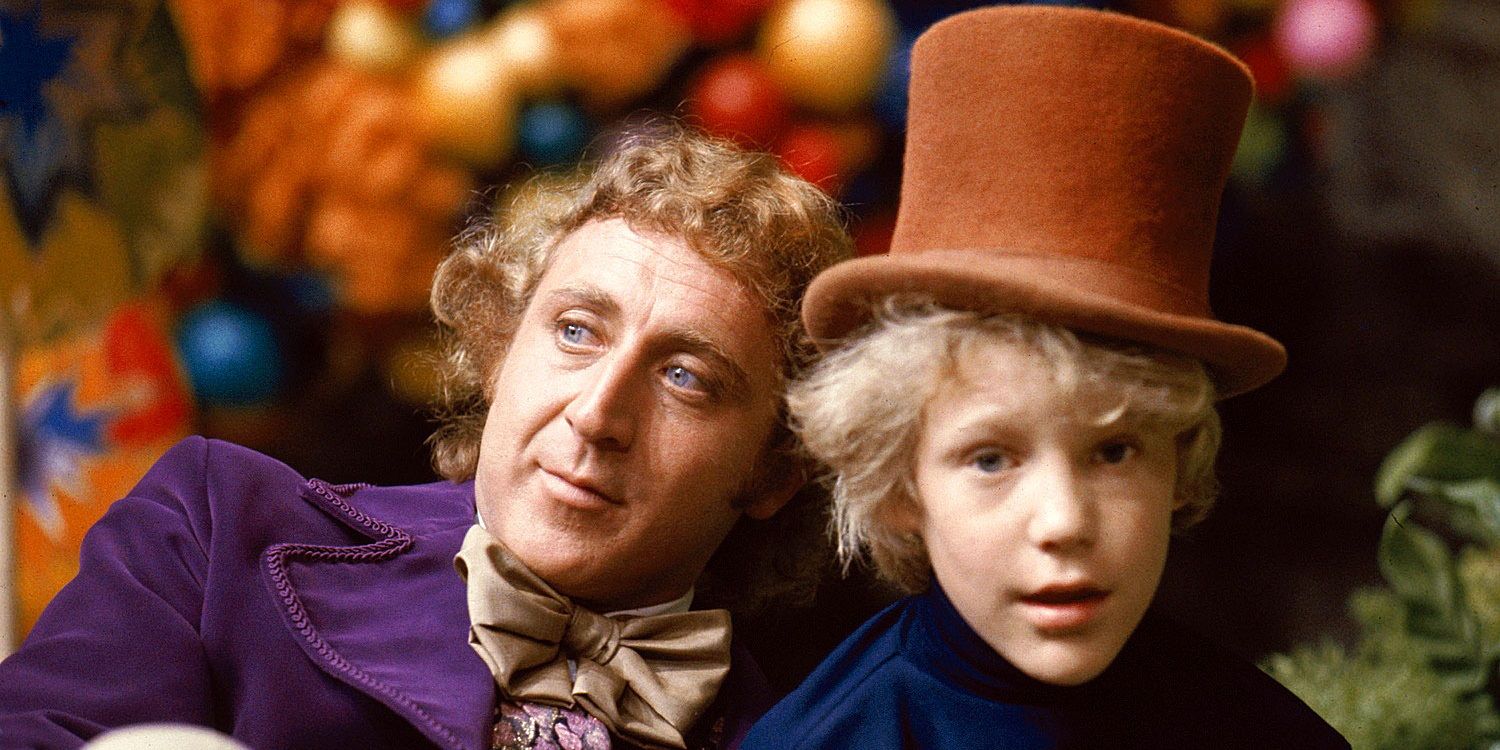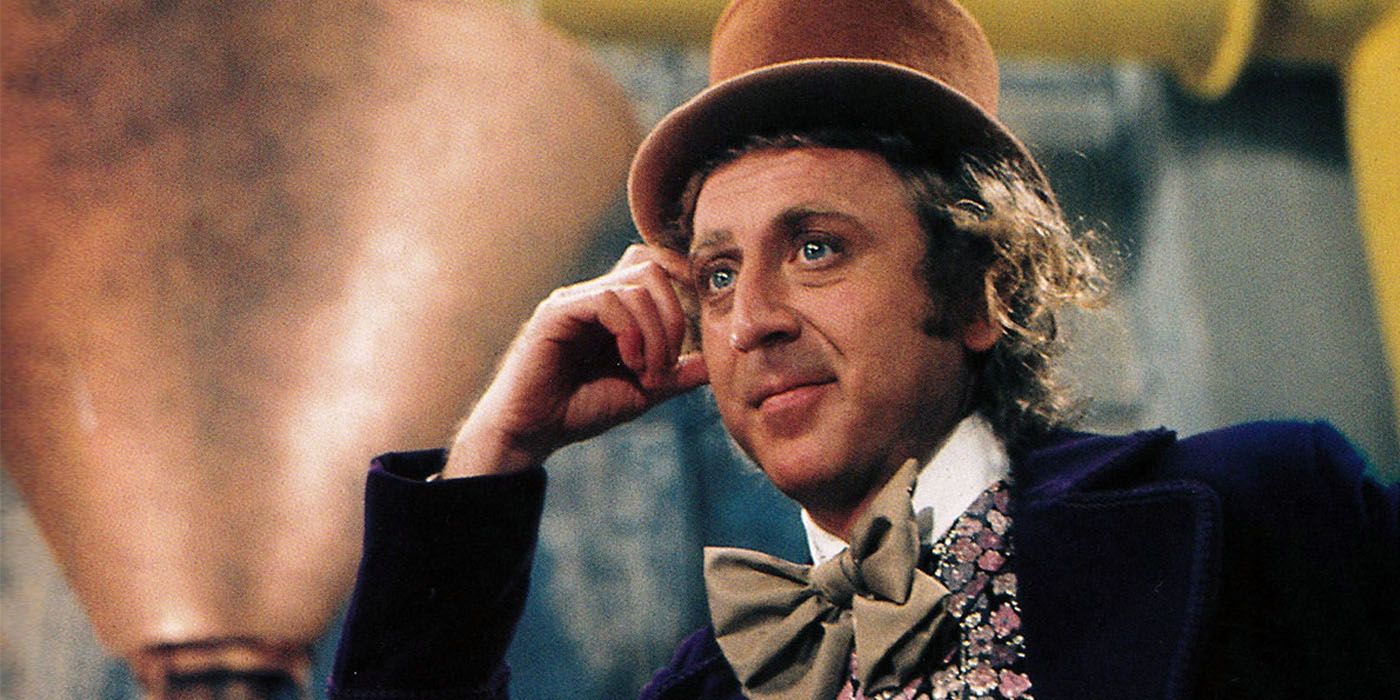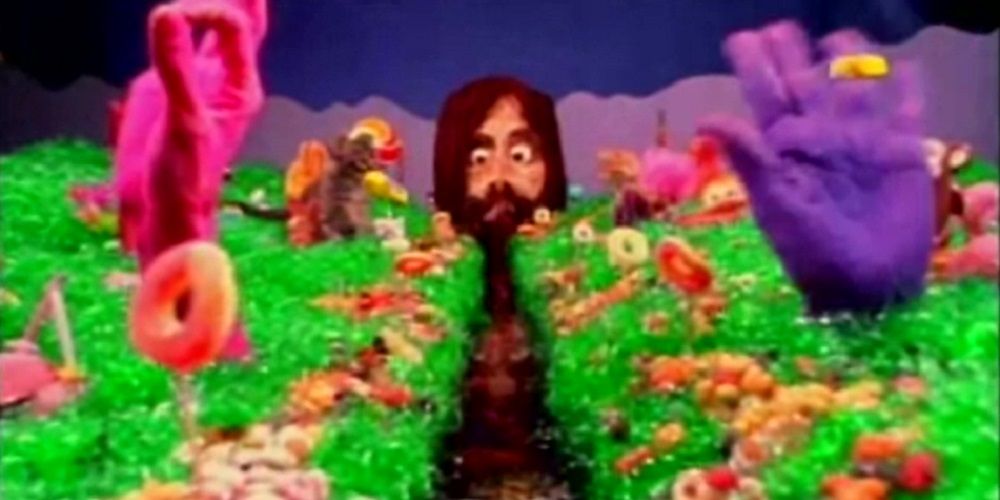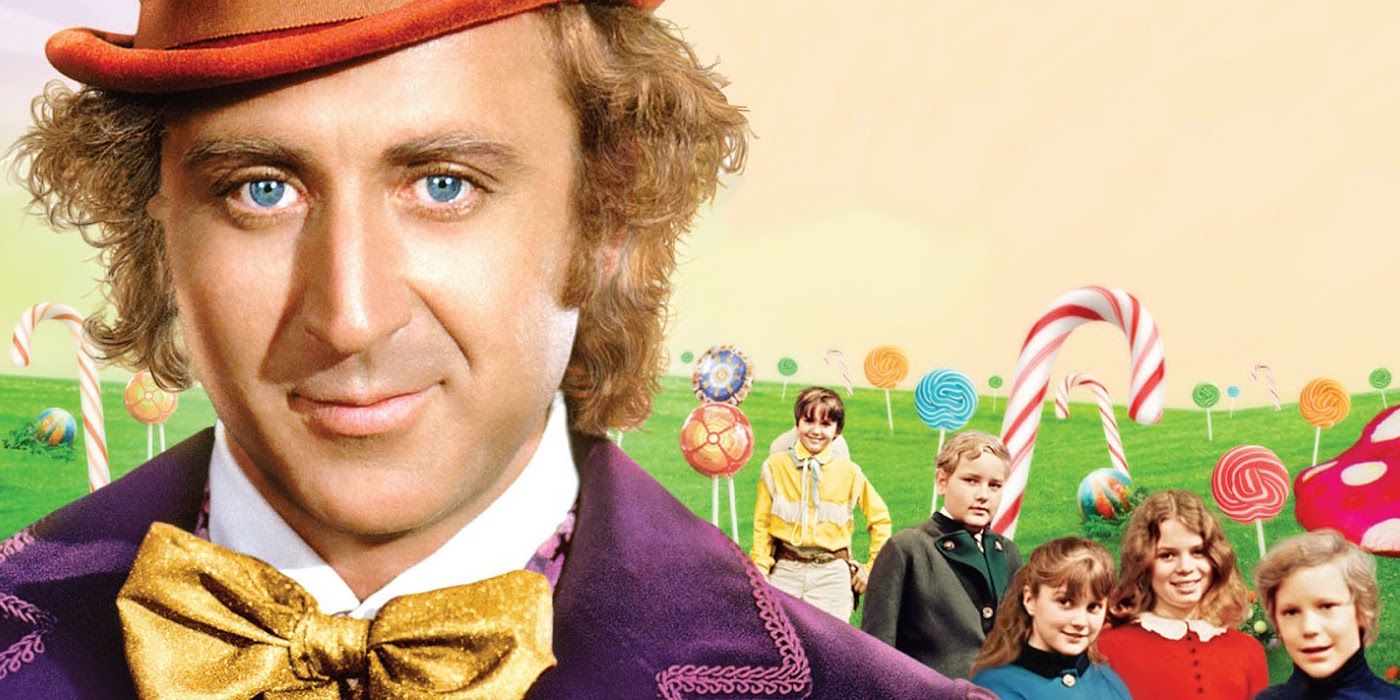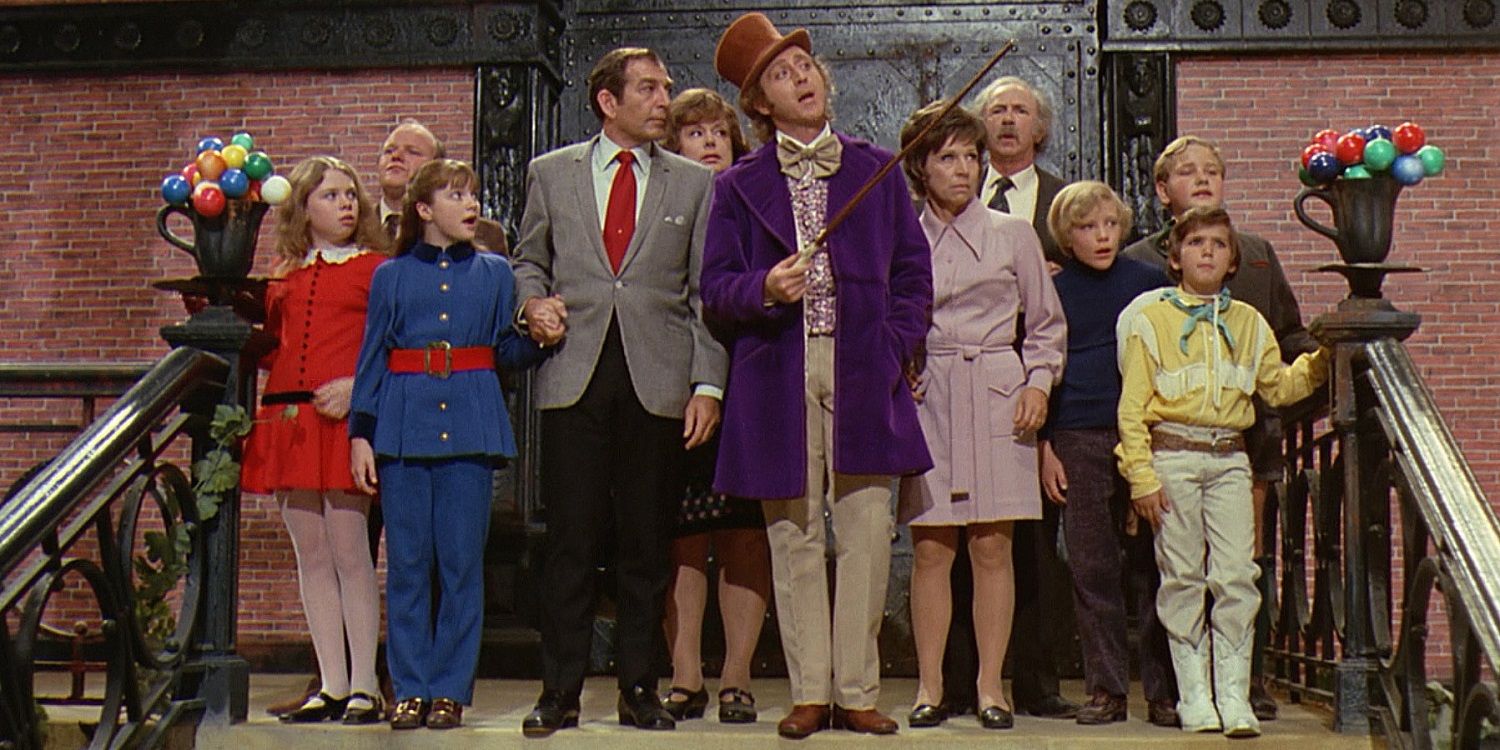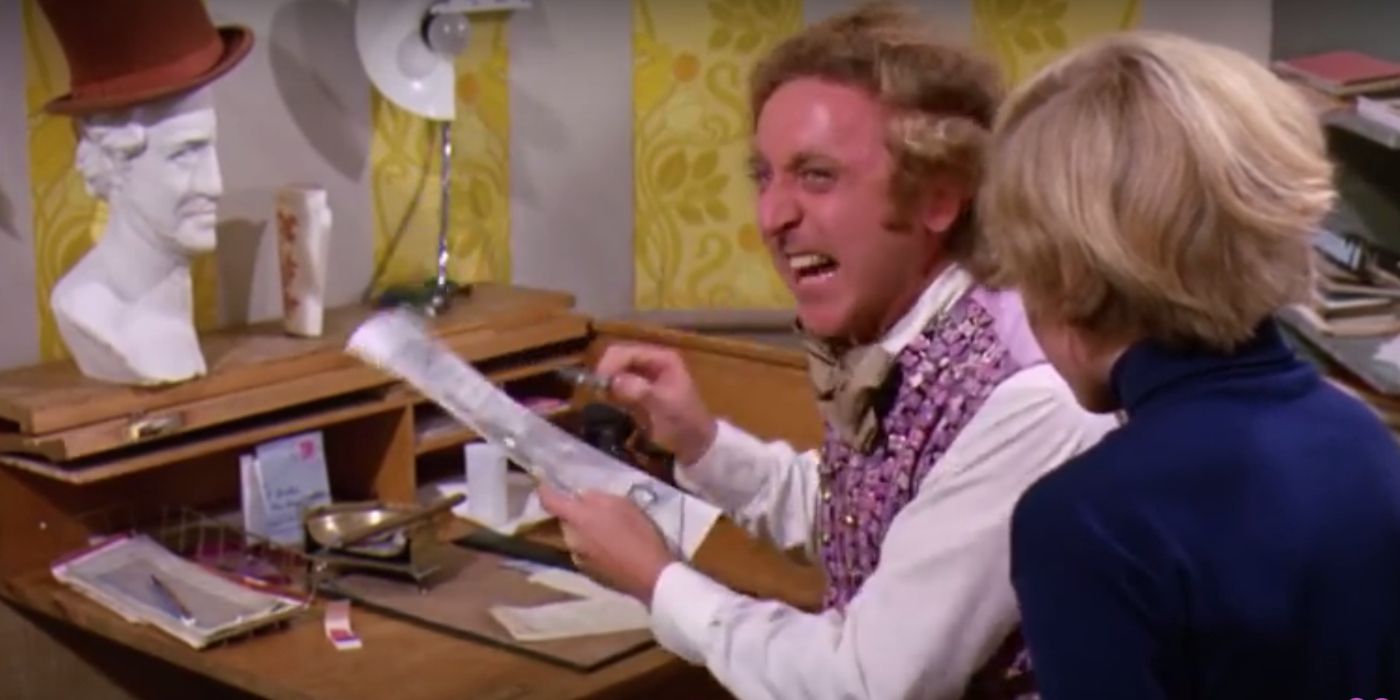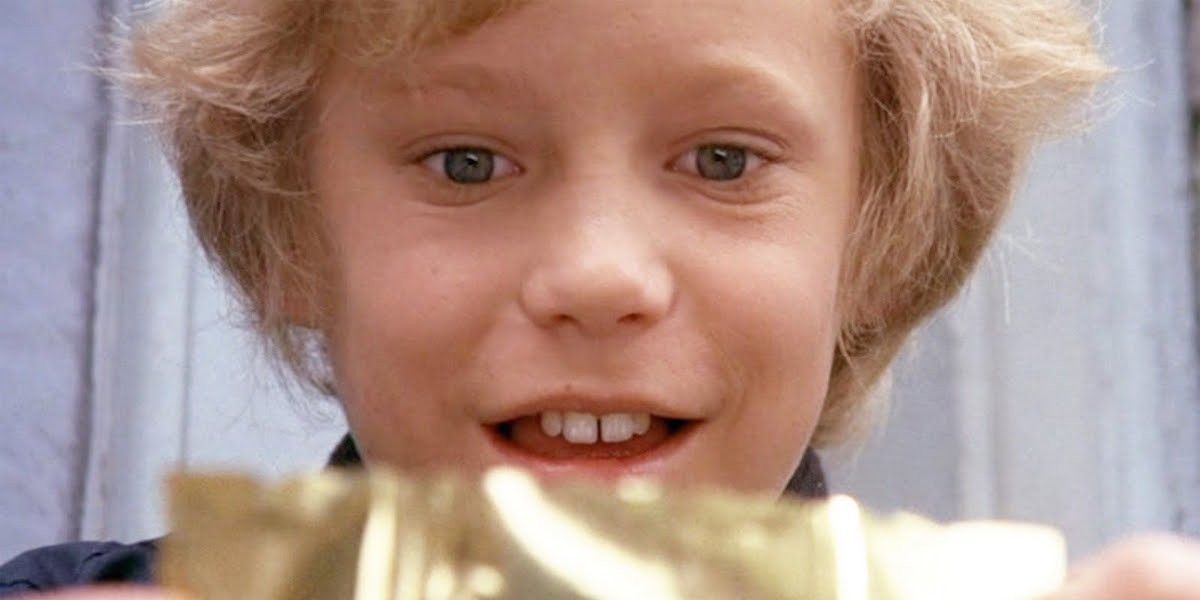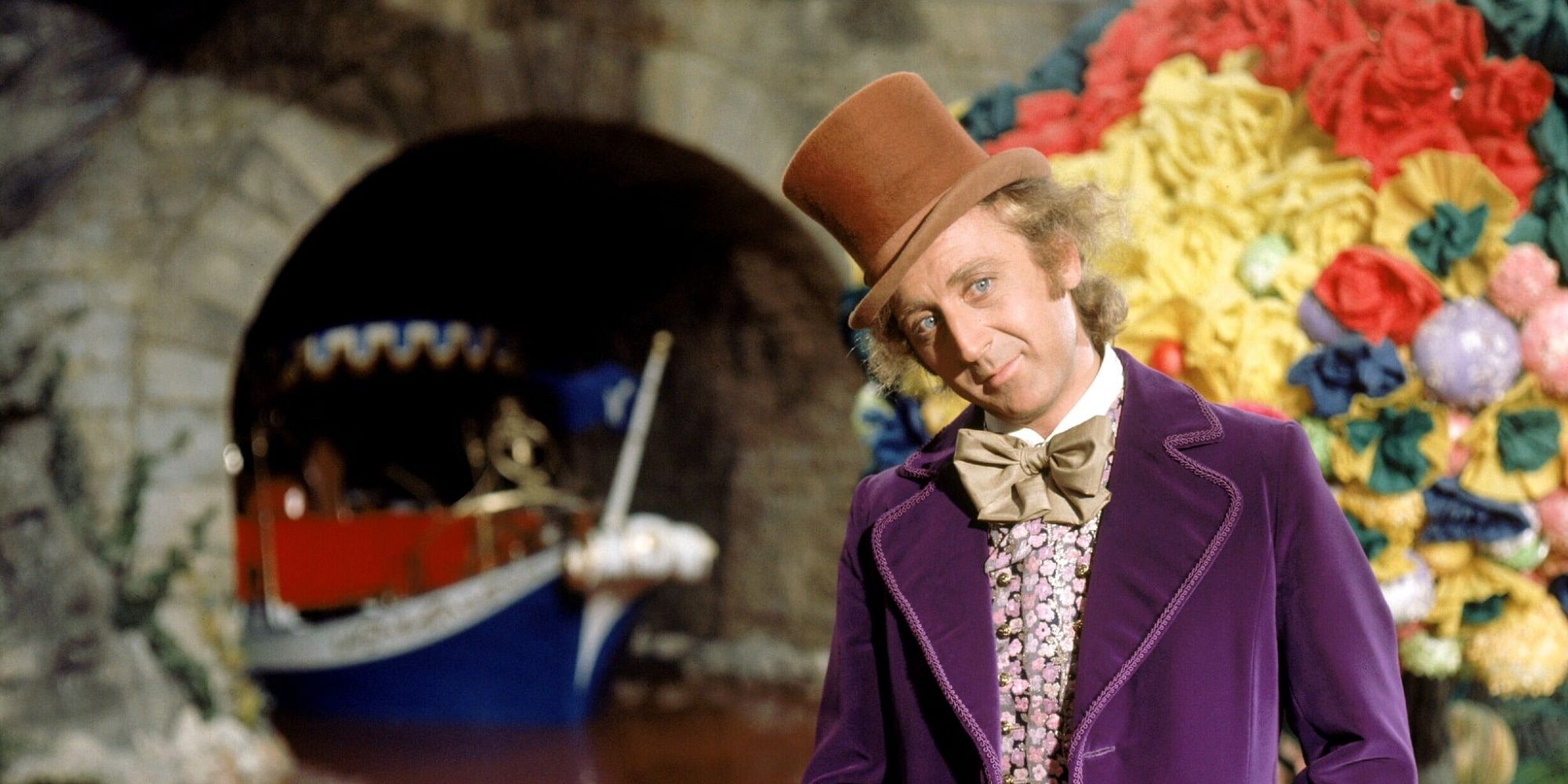The world continues to grieve the loss of actor Gene Wilder, who died this past week at the age of 83. One way moviegoers will be able to keep his memory alive is by celebrating the slew of rich and amazing performances he gave during his lifetime. And Wilder’s most beloved and iconic role is surely Willy Wonka, the eccentric and enigmatic candy maker who has enraptured audiences ever since Willy Wonka and The Chocolate Factory debuted in 1971.
The behind-the-scenes story of director Mel Stuart’s cinematic adaptation of Roald Dahl’s children’s novel Charlie and The Chocolate Factory proved just as mysterious and quirky as the film’s central character and his secretive candy-making process. If you’ve ever wondered how Willy Wonka and The Chocolate Factory originally came together, or about Gene Wilder’s fierce focus and dedication to the role, here are 15 little-known facts about an enduring family classic that still instills viewers old and young alike with pure imagination. Be sure to give it a read before the film receives its theatrical re-release!
15. Gene Wilder Accepted The Role On One Condition
While its impossible to imagine anyone other than Wilder playing Willy Wonka (sorry Johnny Depp), he almost didn’t get the role. And when he was finally offered, he took the part under one emphatic condition: how the character made his grand entrance.
Wilder discussed this creative choice in detail in an interview with NPR’s Fresh Air, noting: “‘When the audience sees Willy Wonka for the first time, I want to come out of the door with a cane and limp my way to the crowd...and then Willy Wonka’s cane gets stuck in a brick and he starts to fall forward and he does a forward somersault, then jumps up; the crowd cheers and applauds."
When director Mel Stuart asked why this was so important, Wilder replied, “Because from that time on, no one will know whether I’m lying or telling the truth.” This brilliant choice made Wonka the character we know and love today, completely unpredictable until the final frame.
14. The Director’s Daughter Convinced Him To Make The Movie
Given Willy Wonka and The Chocolate Factory is a meditation on seeing the world through a childlike perspective, it seems perfectly appropriate and quite poetic that a child would also be responsible for planting the idea to make a film in the first place. And that’s just what happened when Mel Stuart’s daughter Madeline suggested that the book Charlie and The Chocolate Factory would be the perfect basis for a film.
Madeline made the revelation in a 2012 L.A. Times memorial piece for her late father, saying "It was my favorite book at the time, and I told him this would make a great movie." And not only did Stuart take her advice on making the film, she also had a cameo, appearing in the classroom scene where stern teacher Mr. Turkentine becomes obsessed with how many Wonka Bars Charlie and his classmates had consumed. Movie fans the world over owe her a debt of gratitude…or perhaps a Golden ticket will suffice.
13. Quaker Oats Financed The Film to Sell Their Candy Line
The $3 million dollar budget for Willy Wonka was funded entirely by Quaker Oats. It was an unusual move to have a food company fund a film, but such a business deal was a necessity at the time: movie attendance suffered a massive drop during the '60s and early '70s, and studios were in a financial panic. Turning to corporate sponsors helped stop the bleeding.
Willy Wonka producer David Wolper had just produced a television special sponsored by Quaker Oats, where he learned they were looking for a project to help promote a new line of chocolate bars. So a deal was struck: Quaker Oats would finance the film and find a studio for distribution, and they had a vehicle to promote their Wonka bars (created by subsidiary Breaker confections).
Unlike Wonka’s strict regulations for his candy making process, the first batch of Wonka Bars had to be recalled, and their formula wasn’t perfected until 1975! Despite the film’s small box office returns and botched product launch, they still made a mint from other Wonka-themed products including Peanut Butter Oompas, Super Skrunch Bars, and their biggest hit, the Everlasting Gobstopper. Eventually, Quaker Oats sold the Wonka brand to Nestle, and the candy is still produced in an Illinois factory today.
12. The Film Featured A Real Life Nazi War Criminal
Slugworth wasn’t the only nefarious character to appear in Willy Wonka. There was a much darker, real-life villain that appeared as well: a Nazi war criminal.
Adolf Hitler henchman Martin Bormann is featured during the scene where Charlie watches a newscast, which reports that the final Golden ticket was found in South America. When the news anchor shows a photograph of the supposed winner, it’s none other than Bormann himself. Later, Charlie passes by a newsstand with a newspaper with Bormann on the cover, which declares the story a fraud.
So why would the film feature a Nazi? According to the director, it was a joke that never caught on: In real life, Bormann was killed during WWII, but rumor had it he had fled to South America. Needless to say, this reference went over kid’s heads, as Stuart himself realized: "25 years after World War II, very few people knew or cared who Martin Bormann was, so the scene was never as successful as I had hoped."
11. There was a Oompa Loompa Language Barrier
Learning song and dance choreography for any film is always tougher than it looks, but for the cast playing Willy Wonka’s dutiful workers, the Oompa Loompas, it was a particularly trying affair: all of the actors portraying his impish minions hailed from different European countries (the film itself was shot in Munich, Germany) and the language barrier made things difficult. If you keep a close eye out, you can discern the occasional lip-sync flub.
Head Oompa Loompa actor Rusty Goffe said this also caused headaches during the TV room scene where he performed cartwheels. According to the performer, it took more than 76 takes for the actors to get their choreography in sync. Despite these apparent issues of miscommunication, all the Oompa Loompa actors became good friends, and enjoyed a night of drinking and playing practical jokes on the cast and crew, including stealing everyone’s shoes and tying all the laces together.
10. The Oompa Loompa’s Appearance Was Changed to Avoid Charges of Racism
The orange skinned, green haired Oompa Loompa’s have delighted and freaked out children the world over with their indelible appearance. Wonka’s diminutive otherworldly minions had a much different incarnation in Dahl’s novel, however, where they were a pygmy tribe from, (in Dahl’s words) “the deepest heart of Africa."
The NAACP had been critical of Dahl’s portrayal of the characters in the book, and they put pressure on the production to alter their appearance, saying in a statement that: “The objection to the title Charlie and the Chocolate Factory is simply that the NAACP doesn’t approve of the book, and therefore doesn’t want the film to encourage sales of the book. The solution is to make the Oompa-Loompas white and to make the film under a different title.”
Director Mel Stuart took the NAACP’s criticisms to heart, making it now impossible to imagine the characters without their orange and green likenesses. Dahl was also sensitive to the accusations, and even changed their appearance to orange and green for subsequent printings.
9. How Willy Beat Charlie in the Title Department
Fans of the book have always wondered why the film changed the title from Charlie and The Chocolate Factory to Willy Wonka and The Chocolate Factory. So why did they? Believe it or not, there are four (!) different theories that have floated around over the years.
One is that the specter of racism reared its head again -- apparently one of the films producers, stung over the NAACP’s accusations over the Oompa Loompa’s, noted that slaves called their bosses “Mr. Charlie” during the war. Another theory is yet another racial implication: that the word ‘Charlie’ was a derisive term for the Viet Cong by American Soldiers during the Vietnam War.
The other theory is less culturally sensitive and more corporate: since Quaker Oats was using the film to market their Wonka Bar, they wanted a title that best reflected the brand. Whatever the reason, Stuart made the most compelling argument for the name change, saying “If people say, ‘I saw Willy Wonka,’ people would know what they were talking about. If they say, ‘I saw Charlie,’ it doesn’t mean anything.”
8. Roald Dahl Hated The Film...and Gene Wilder’s Performance
You can imagine how the name change, and accusations of racism from the NAACP (which deeply upset him) would sour Dahl’s association with the film. But those issues were only part of why the author despised the filmic adaptation of his book. Dahl apparently disliked Wilder’s performance, as he'd always envisioned a British actor in the role, imagining comedic actors Spike Milligan, Ron Moody or Peter Sellers for the part.
The author was also not fond of the musical score by Leslie Bricusse and Anthony Newley. Dahl’s friend Donald Sturrock, author of Storyteller: The Life of Roald Dahl confirmed as such, saying “He felt it was a little too saccharine. I picked up from other people that he found it too sappy and sentimental. It’s interesting because I don’t think he realized what a strong effect the music had on a generation of kids.”
Dahl’s misgivings with the film caused such anguish that he wrote it into his will that the book’s sequel (Charlie and The Great Glass Elevator) could never be filmed.
7. The Film Was A Major Influence On Marilyn Manson
Shock Rocker Marilyn Manson was public enemy number one to parents everywhere in the '90s. Amidst his controversial songs espousing satan, sex, drugs and rock and roll, there were unlikely references to children's entertainment. And Willy Wonka And The Chocolate Factory proved a major inspiration upon their songwriting and visual aesthetic.
His band's 1994 debut album Portrait of An American Family opens with the track "Prelude (The Family Trip)" where Manson recites Wilder’s monologue from the Boat Trip over eerie soundscapes. And his crazed, demonic recitation is just as dark and unnerving as any song with blatantly offensive lyrics. The singer's obsession with Willy Wonka even extended to a music video for the song "Dope Hat", featuring an homage to the film's boat ride scene and Manson donning a Wonka-esque outfit. It all proves that Willy Wonka's dark, subversive element was more apparent to children than adults, which won over Generation X and every generation that's followed.
6. A Box Office Dud Transformed Into A Cult Classic
Willy Wonka and The Chocolate Factory was released on June 30, 1971 and the world could not have cared much less. It finished fifty-third on the year, with only mild praise from critics and meager box office returns.
Luckily, thanks to television, it gained a new life (which is ironic, given the fact that the film warned of the evils of the small screen). Kids ate it up, and its legend continued to grow. It currently ranks with a stellar 89% Fresh rating on review aggregate site Rotten Tomatoes.
Why has it endured for so long? There are several reasons, but the most compelling is that it manages to appeal to all age groups, kids and adults alike. This makes it quite groundbreaking, pre-dating the modern age of Pixar films that so ably appeal to all demographics. Sure it’s heartwarming, but it also has a dark edge. And it’s those diametrically opposed yet totally complimentary elements that make it so fascinating.
And seeing it as an adult means you surely saw it as a child. That kind of nostalgia never dissipates.
5. Paramount Sold The Rights To The Film To Warner Bros.
After Willy Wonka and The Chocolate Factory underperformed at the box office (earning only $4 million on a three million budget), Paramount Pictures thought they had invested in a lemon instead of chocolate. So they decided against renewing distribution when the rights were set to lapse in 1977.
For their part, Quaker Oats also sought to distance themselves from the property, and sold their shares to Warner Bros. for $500,000. We're sure all involved are kicking themselves, given Willy Wonka's enduring popularity, which has proved a lucrative cash cow for Warners, between a 1996 25th anniversary theatrical re-release (which grossed $21 million), DVD and Blu-ray sales, a smash box office remake from director Tim Burton (featuring the book's original title), a musical, and even a restaurant at Universal Studios.
We're sure both Quaker Oats and Paramount would love to 'strike that, reverse it!' Hindsight is an incredibly slippery slope in Hollywood.
4.The Director Liked Keeping The Young Cast On Edge
Actor Peter Ostrum (who played Charlie) noted in an interview that Willy Wonka director Mel Stuart enjoyed the element of surprise with his young cast: “The most impressive set was the chocolate room. Our director Mel Stuart didn’t want us to see the set until we began filming so we would have that surprised expression on our faces.”
This works to marvelous effect, as the children, much like the audience, have genuine expressions of awe as they take in the delicious looking surroundings, including that intoxicating waterfall that proved too tempting for the gluttonous Augustus Gloop (Michael Bollner).
By all accounts, the child performers felt the artificial factory had a real-life amusement park feel, and that was made palpable to anyone who has seen the film. This approach also holds true for the unforgettable boat ride, where actor Paris Themmen (Mike Teevee) noted that in a Reddit AMA that his and his fellow cast members expressions of fear were real. They were genuinely terrified by Wilder’s creepy unhinged monologue (“So the danger must be growing!”) and the dark ominous set…unaware that the idyllic candy factory had such a dark underbelly.
3. Gene Wilder Felt Pretty Bad About Keeping The Cast On Edge
Another part of Willy Wonka and The Chocolate Factory’s unpredictable tone owes to Wilder’s performance, with Wonka given to the occasional violent mood swings and enigmatic utterances. In addition to his crazed boat ride monologue, there is also the famed moment of fake outrage at the film's climax, when Wonka berates Charlie and Uncle Joe (Jack Albertson) when inquired about why he wouldn’t be receiving a lifetime supply of chocolate as promised (“I SAID good day sir!!”)
In the documentary Pure Imagination, Ostrum revealed neither he nor Albertson were made aware that Wilder would be yelling at them with such ferocity. In rehearsals Wilder deliberately held back, so that when the cameras were rolling, the actors would react to his outburst in a suitably shocked fashion. It also speaks to Wilder’s gentle nature that, according to Ostrum, he had to fight back the urge to warn him about how he would yell in the scene. But in the end, no harm done...or in Wonka's parlance: 'A Little Nonsense Now and Then is Relished by the Wisest Men.'
2. What Did the Candy Really Taste Like?
It’s pretty much impossible to watch Willy Wonka And The Chocolate Factory and not get hungry. Indeed the candy maker’s amazing array of fantastical confectionary creations fuel both the imagination and the stomach. So what did the candy featured in the film actually taste like?
While many of the items in the magnificent chocolate room were actually made from chocolate, most other foodstuffs featured in the film were best left to the imagination. The seemingly delicious looking chocolate river was one of the biggest buzz-kills: 150,00 gallons of water filled with chocolate powder and cream that stunk worse by the day.
Gene Wilder’s delicious looking daffodil teacup was actually made from wax, requiring him to spit out bites between camera takes. And what about that infamous lickable wallpaper? Well, that was probably the least impressive entrée. It tasted less like snozzberries and more like…well….wallpaper. Or in the words of Julie Dawn Coe (Veruca Salt): “It tasted disgusting.”
1. Gene Wilder Was Very Picky About His Wardrobe
Wilder took his craft dead serious, even in a lighthearted film such as Wonka. And he had strong, informed opinions from everything from the entrance of his character to his famous costume as well.
The original costume design sketches for Wonka missed the mark for Wilder. He felt so strongly on this that he wrote a letter to Stuart, and articulated how he felt the suit could be redesigned to better suit the character’s sensibilities, which he loosely defines as: “A vain man who knows colors that suit him, yet, with all the oddity, has strangely good taste. Something mysterious, yet undefined.” The letter includes such revelations as asking for “two large pockets to take away from the svelte, feminine line,” and vetoing the proposed color of pants: “Slime green trousers are icky. But sand colored trousers are just as unobtrusive for your camera, but tasteful.”
He also requested changing the size of his infamous top hat, noting “that making it 2 inches shorter would make it more special.” Lastly, he wanted them to match his footwear: “To match the shoes with the jacket is fey. To match the shoes with the hat is taste.” Wilder’s letter speaks volumes about how he prepared for his role, and why his performance remains so unforgettable as a result.
---
Hope you enjoyed our list of fun facts about Willy Wonka and The Chocolate Factory! Are than any factoids you think we missed? Tell us in the comments!

